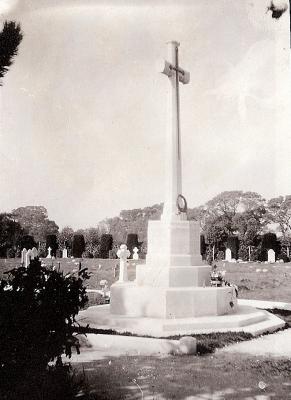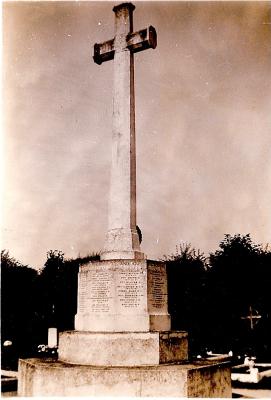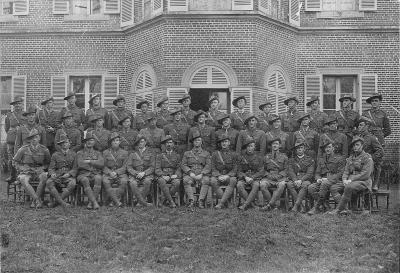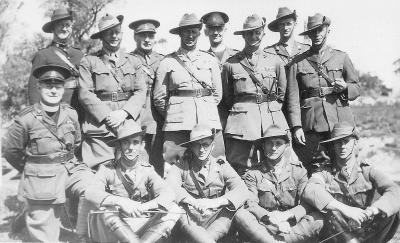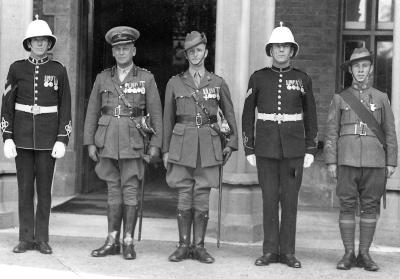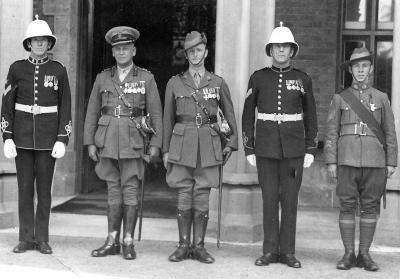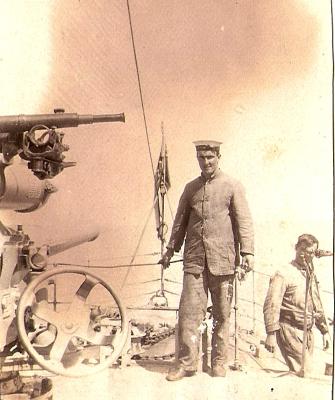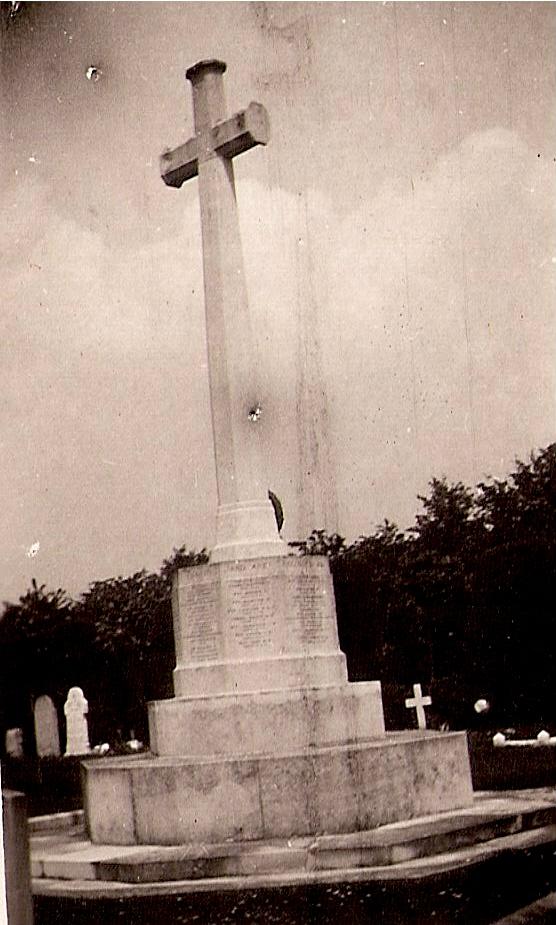World War 1, Europe, England, Cross of Sacrifice, 1919
1919Cross of Sacrifice at CWG Cemetery for Australian soldiers in England
For individuals buried in a War Grave or War Cemetery there is a uniform headstone with the emblem relevant to their country, service or Regiment, their name, age and service details, and if desired by the family, a religious verse.
The most famous of these verses is 'Their name liveth forevermore' (Ecclesiasticus 44: 14) and was chosen by Rudyard Kipling after the Great War. Rudyard Kipling became involved in the Commonwealth War Graves Commission (CWGC) as a result of the death in action of his eldest son during the Great War and selected this verse to be inscribed around each Stone of Remembrance at a War Cemetery. The Stone of Remembrance is one of the symbols unique to CWGC War Cemeteries. It is placed at a War Cemetery with greater than 1,000 burials. It is a non-denominational feature comprised of a stone slab at the top of three steps. Its design is based on the Parthenon and was the creation of Sir Edward Luytens, a renowned British architect who was also involved in the creation of the CWGC.
The other symbol seen in a CWGC war cemetery (50 or more burials) is the Cross of Sacrifice. This Latin cross in sand or limestone has a downward pointing bronze sword attached to the front which represents the military and spiritual nature of the cemetery. Sir Reginald Blomfield is the second architect who was involved in the creation of the CWGC, and was also responsible for the design of the Menin Gate at Ypres.
Details
Details
Australian Army Museum of Western Australia
Australian Army Museum of Western Australia
More items like this
Other items from Australian Army Museum of Western Australia
- World War 1, Europe England, 1919
- World War 1, Europe England, BLYTHE, 1919
- World War 1, Australia Western Australia, 1914
- World War 1 , Europe, BLYTHE, 1916
- World War 1, Europe, 44 Battalion, 1918
- World War 1, Europe, 1919
- World War 1, Australia Western Australia Swanbourne, 1939
- World War 1, Western Australia, MCKENZIE, 44 Battalion, 1919
- World War 1, Australia Western Australia Blackboy Hill, 1916
- Interwar, Australia Western Australia Perth, 1930
- World War 1, Europe, 1917
- World War 1, Australia, HMAS Encounter, 1917
